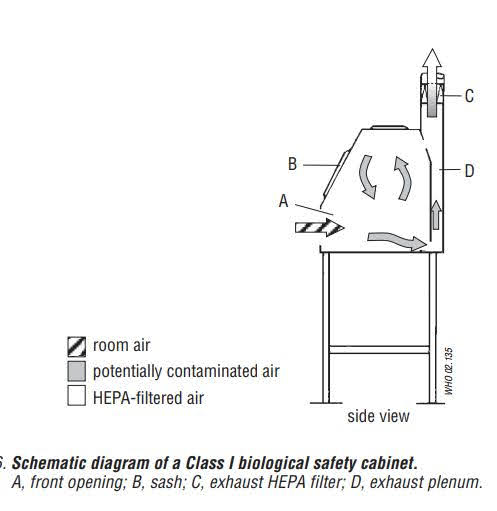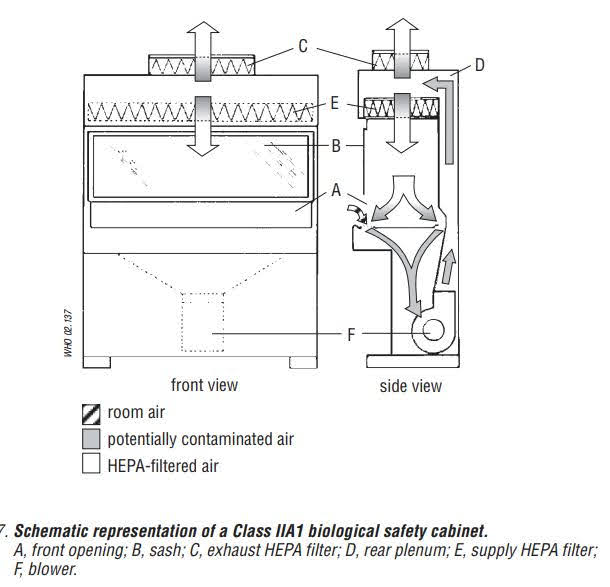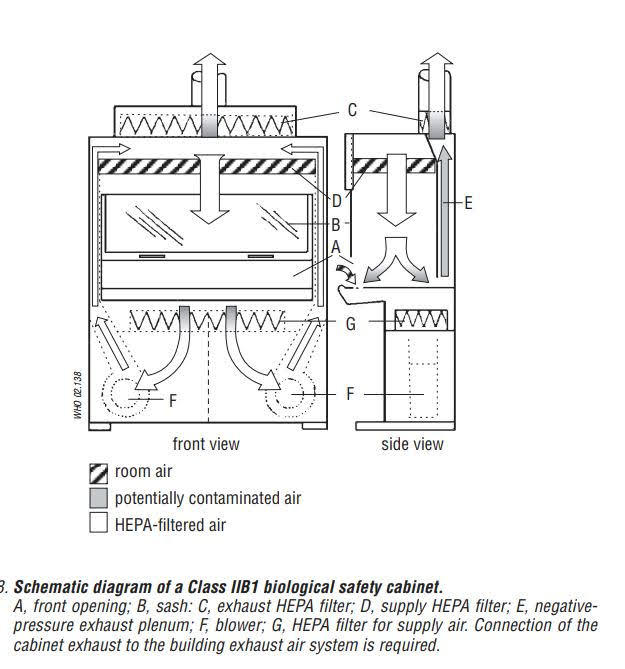Table of Contents
The control of potentially dangerous biological agents is an imperative goal of every biosafety system. In the sense in which infectious products are treated or preserved in the lab setting, the word “containment” is used to describe protection procedures, structures and facilities. Containment is designed to minimize or avoid access to potentially harmful substances by laboratory personnel, others and the outside world. Increased health security may be offered with the use of vaccines. The correct mixture of these elements should be calculated in the risk evaluation of the working performed with the individual agent.
Safety Equipment (Primary Barriers and Personal Protective Equipment)
Health infrastructure contains BSCs, sealed containers and other devices for the removal of or minimization of access to biological products that are dangerous. The BSC is the principal method for the containment by several microbiological technique of bacterial droplets or aerosols. Three groups of microbiology labs with BSCs (Class I, II , III). Open face BSCs Class I and Class II are big barriers that, when used with good microbiological techniques, offer substantial amounts of security for laboratory staff and the environment. The Class II Biological Protection Cabinet also offers protection from potential exposure of the handled products ( e.g., cell cultures, microbiological stocks) within the cabinet. The gasproof biological safety cabinet Class III provides the highest degree of protection possible for workers and the environment.
Selection of Biological Safety Cabinet (BSC), by Type of protection needed
| Type of Protection | BSC selection |
| Personnel protection, microorganisms in Risk Groups 1–3 | Class I, Class II, Class III |
| Personnel protection, microorganisms in Risk Group 4, glove-box laboratory | Class III |
| Personnel protection, microorganisms in Risk Group 4, suit laboratory | Class I, Class II |
| Product protection only if laminar flow included | Class II, Class III |
| Volatile radionuclide/chemical protection, vented to the outside minute amounts | Class IIB1, Class IIA2 |
| Volatile radionuclide/chemical protection | Class I, Class IIB2, Class III |
Biosafety Level/Class 1
Biosafety level 1 is appropriate for research involving well-characterized agents that are not known to reliably cause disease in immunocompetent adult humans, and pose limited possible danger to laboratory staff and the community. BSL-1 laboratories aren’t necessarily isolated from the building’s general traffic trends. Using traditional microbiological methods, the work is usually performed on open bench tops. No special containment equipment or plant architecture is needed but can be used when defined by sufficient risk assessment.Laboratory workers must have advanced experience in the laboratory techniques and be supervised by a scientist with microbiology expertise or similar knowledge.
In BSL 1 space air is drawn in at a minimal velocity of 0.38 m / s from the front window, it travels over the work surface and is expelled from the cabinet by the exhaust pipe. The lateral flow of air whisks away from the laboratory worker and into the exhaust duct aerosol particles which may be produced on the work surface. The front opening allows the operator’s arms to touch the work surface within the cabinet as he or she peers through a glass window at the work surface. The window may also be entirely lifted for washing or other uses to provide access to the work surface.

- The air from the cabinet is exhausted through a HEPA filter:
- Into the laboratory and then to the outside of the building through the building exhaust
- To the outside through the building exhaust
- Directly to the outside. The HEPA filter may be located in the exhaust plenum of the BSL or in the building exhaust. Some Class I BSLs are equipped with an integral exhaust fan, whereas others rely on the exhaust fan in the building exhaust system.
Biosafety Level 2
Level 2 of biosafety builds upon BSL-1. BSL-2 is ideal for research requiring agents posing mild risks to workers and the community. It differs from BSL-1 in that:
- Laboratory workers have specialized experience in pathogenic agent management and are supervised by scientists who are experienced in the treatment of infectious agents and related procedures;
- Laboratory access is limited while the study is being carried out
- Both procedures requiring the formation of contagious aerosols or splashes are conducted in BSCs or other physical containment equipment.
In addition to providing personal protection, the Class II BSL was designed to shield work surface materials from polluted room air. Class II BSLs, of which there are four types (A1 , A2, B1 and B2), differ from Class I BSLs by having only air passage through the work surface from a HEPA-filtered (sterile) source. The Class II BSL may be used in Risk Groups 2 and 3 for working with infectious agents. Class II BSCs can be used for using positive-pressure suits when dealing with infectious agents in Risk Group 4.
Class II type A1 biological safety cabinet
An interior ventilator pulls room ventilation (supply air) into the front opening through the cabinet and through the front intake grill. This air’s inflow velocity on the front opening face will be at least 0.38 m/s. Then the supply air passes through a HEPA supply filter before flowing down the surface of the work. When the air flows down, it “splits” between 6–18 cm from the working floor, one half of the air flowing down through the front exhaust grill and the other half through the rear exhaust grill. During this downward airflow, any aerosol particles produced at the work surface are caught immediately and moved through the front or rear exhaust grills, thereby ensuring the highest degree of product protection. Then the air is discharged into the gap between the supply and exhaust filters at the top of the cabinet via the rear plenum. Because of the small size of these filters, nearly 70 percent of the air recirculates back into the work zone through the HEPA supply pipe; the other 30 percent passes through the exhaust pipe into the space or outside. Class IIA1 BSC exhaust air may be recirculated to the space or discharged to the exterior of the building via a thimble attachment to a dedicated vent or by an exhaust network for houses.

Class II type A2 vented to the outside, B1 and B2 biological safety cabinets
Class IIA2 vented outwards, BSCs IIB1 and IIB2 are type IIA1 variants. Each variation allows for advanced use of the BSC. These BSCs vary from each other in many aspects: the rate of air absorption from the front opening; the volume of air recirculated through the work surface and expelled from the cabinet; the exhaust system, which specifies if air from the cabinet is emitted into the room, or outside, through a separate exhaust system or through the building exhaust system. The pressure configurations (whether the cabinets have under negative pressure biologically contaminated ducts and plenums, or biologically contaminated ducts and plenums surrounded by negative pressure ducts and plenums).

Class III biological safety cabinet
This form of designation offers the highest degree of protection for staff and is reserved by employees from Danger Category 4. All penetrations are “tensile gas” sealed. Supply air is filtered with HEPA, and exhaust air flows through two HEPA filters. Airflow is maintained by a dedicated exterior exhaust system to the cabinet, which keeps the interior cabinet under negative pressure (around 124.5 Pa). Connection to the work surface is by heavy-duty latex gloves, which are connected to cabinet openings. The Class III BSC will have a pass-through box attached, which can be sterilized and fitted with a HEPA-filtered exhaust. The cabinet of Class III can be attached to a double-door autoclave used to decontaminate any items that enter or leave the cabinet. In order to stretch the work surface many glove boxes can be joined together. Class III BSCs are ideal for research in laboratories at Biosafety levels 3 and 4.


References:
- Laboratory Biosafety Manual 3rd Edition. WHO
- Biosafety in Microbiological and Biomedical Laboratories 5th Edition. CDC,NIH
